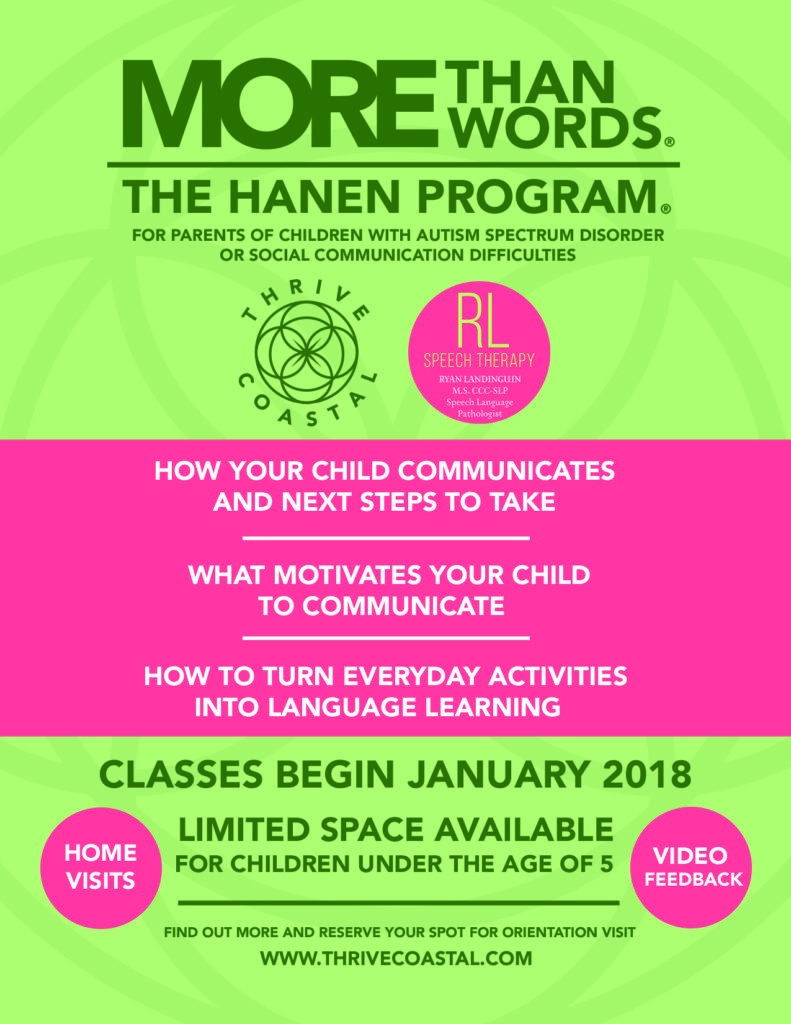If you have a child with autism spectrum disorder (ASD), or if you work with this population of children, you’ve likely heard the term early intervention. It’s almost impossible to read anything about ASD without hearing this catchphrase.
So what’s the big deal about early intervention? Why is it so important to start helping children with ASD as early as possible?
Well, researchers have been working hard to find signs that let us identify children earlier and earlier. And now that children are receiving diagnoses earlier, we are able to follow their language development from a young age and track their progress. This means that we can see patterns in their development and notice time periods when children tend to make the most improvements in their language skills.
Two recent studies track young children’s language development
Two groups of researchers recently tracked the language skills of young children with ASD and compared them to their later abilities:
- Jessica Mayo and her colleagues from the University of Connecticut looked at 119 children with ASD between the ages of 16 and 30 months [1]. They compared the timing of children’s first words with their abilities two years later. They considered a word to be a “first word” if it was a word other than “mama” or “dada” that was used in a meaningful, consistent way to send a message to someone (they did not include words that children could imitate but not say on their own).These researchers found that children who spoke their first words earlier tended to have better abilities later in childhood. And, in particular, children who acquired their first words by 24 months tended to have stronger language and cognitive skills later on than children who didn’t meet this milestone. However, even after 24 months, the earlier children acquired first words, the better their progress was.
- Andrew Pickles and his colleagues followed 192 children with ASD from the time they were 2 years old up until they were 19 years old [2]. They looked for patterns in children’s language development and noticed several interesting things:
- All of the children improved between ages 2 and 19, but their rate of improvement was quite varied before age 6 – some children started out with slow progress but made very good progress and surpassed other groups of children by age 6. Other groups of children had more stable progress over time.
- After age 6, the children’s progress was not varied– children continued to make improvements after age 6, but they maintained their developmental path (did not surpass other groups’ progress but stayed on a stable track over time).
What this means is that before age 6, children with ASD make the most changes in their language development. And if we want to have the biggest impact on a child’s language development path, we need to start doing so before age 6 [2].
The earlier, the better
The take-home message from these two studies is that the earlier children acquire language skills, the better their outcomes tend to be. Children who say their first words by 24 months tend to have better abilities later on, and children who show a lot of progress in their language development before age 6 tend to have better language skills as adults.
This does not mean that all progress stops as children get older. Children continue to grow and develop new skills. But this research shows that the key time frame for children to make the most gains in their language skills is when they are younger than 6. This means that the earlier we start helping children with their language development, the better.
Helping children early
In order to help a child as early as possible, it’s important to:
- Seek help if you are concerned – Mayo and her colleagues discourage what has been called the “wait and see” approach to language delay. If a child’s language is behind, seek out an assessment by a speech language pathologist (SLP) as soon as possible to determine if help is needed.
- Keep track of a child’s communication skills – SLPs rely on parents and other adults in a child’s life to provide valuable information about a child’s progress and skills at home. When a child starts to use words, notice if they are used to send a message to someone, or if the child is just playing with sounds or copying something he’s heard. And notice the other ways a child communicates – with his eyes, hands, and body. Any information you can provide will help the SLP determine whether your child needs intervention.
- Communication is about more than just words – Mayo and her colleagues emphasize that while their study looked at children’s first words, words should not be the only focus in intervention. There are several skills which promote children’s outcomes that often develop well before words, and spoken words should only be the focus when a child is ready.
We need to give children the best kick-start we can so they have their best chance at good outcomes. In order to do this, we need to identify children early and provide them with help as soon as possible. Parents should to listen to their gut and seek help if they are concerned about their child. Because the earlier a child receives help, the better.
References
- Mayo, J., Chlebowski, C., Fein, D. A., & Eigsti, I. (2013). Age of first words predicts cognitive ability and adaptive skills in children with ASD. Journal of Autism and Developmental Disorders, 43, 253–264.
- Pickles, A., Anderson, D. K., & Lord, C. (2014). Heterogeneity and plasticity in the development of language: A 17-year follow-up of children referred early for possible autism. Journal of Child Psychology and Psychiatry, 55(12), 1354–1362.
If you’re a professional working with young children, take a look at our seminar Starting Early: Red Flags and Treatment Tips for Toddlers on the Autism Spectrum for more information on how to identify red flags and select appropriate intervention goals for toddlers with autism spectrum disorder.






Leave A Comment